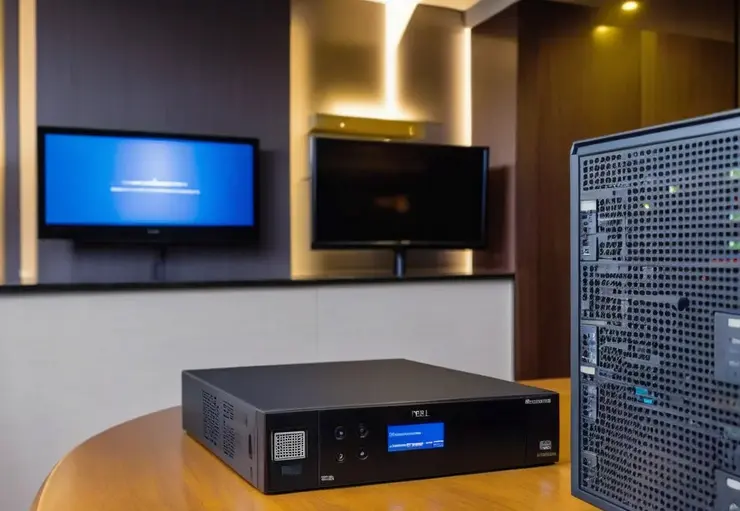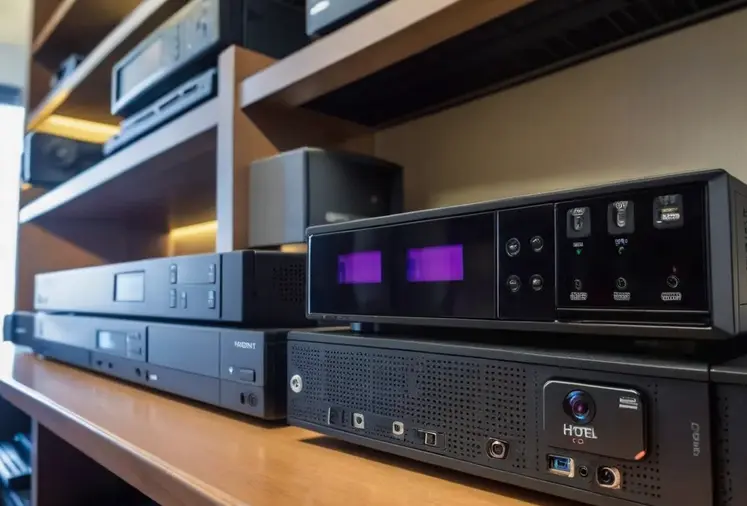As reliance on remote video monitoring grows for both home and business security applications, users inevitably encounter frustrating scenarios where network video recorders (NVRs) refuse connections from smartphones and computers outside the local network.
Blank screens or error messages greet remote login attempts despite seemingly correct login credentials and settings. Before abandoning your NVR as a loss, try these tips to troubleshoot remote access problems and safely open pathways to camera feeds when away from home.
Common Causes of Failed Remote NVR Access
Like any complex digital system linking hardware and software across multiple platforms, many potential weak points impede remote NVR access. Start troubleshooting by checking for the most common snags first.
Internet Down Can’t connect remotely if broadband service is interrupted even briefly. Verify router indicates active and uninterrupted WAN connection.
 Firewall Blocking Network firewalls and antivirus often automatically block unfamiliar access attempts without proper NVR app permissions configured.
Firewall Blocking Network firewalls and antivirus often automatically block unfamiliar access attempts without proper NVR app permissions configured.
Port Forwarding Not Enabled
Accessing devices inside local networks requires inbound communication paths called port forwarding to be opened.
Dynamic IP Address Changed
typical residential internet connections rotate WAN IP addresses periodically unless a static public IP is assigned. Remote access requires accounting for these changes.
Incorrect Local or Remote Login Details
Entered Mixing up device usernames, passwords or IP addresses between internal and external sessions prevents proper authorization.
DDNS Sync Failure Dynamic DNS services associate custom URL with frequently changing IP address for remote login. Sync errors break this link.
Connection Mode Mismatch
NVR apps allow different types of access modes. Using UID remotely while NVR expects IP address format creates conflict.
App Permissions Needed Mobile apps request permission to access camera feeds, storage, notifications and other functions. Disabling certain access prompts login failures.
Steps to Fix Remote Access Connection Issues
Systematic process of elimination helps isolate the culprit.
 Check Internet Connection
Check Internet Connection
First verify the NVR router indicates proper broadband connection without any service interruptions by your Internet Service Provider. Outages or dropped connections temporarily break all remote communication capabilities until stability resumes.
Confirm Cellular or WiFi Signal Reliability
Use a secondary app demanding steady connectivity – like video call or streaming – to confirm remote device has strong, consistent cellular signal or WiFi. Laggy or inconsistent reception prevents stable remote viewing sessions. Move to a better signal location if available.
Disable Firewall and Antivirus Temporarily
Leading cybersecurity software packages automatically block unfamiliar traffic attempts into local networks. While ultimately a good thing, first disable these protections briefly to rule out blocking as the cause of remote login failures – just don’t leave them off. Add permissions once remote viewing succeeds.
Allow App Permissions
Mobile viewing apps must be granted various permissions to fully access NVR functions. Make sure options like View Video Feeds, Manage Recording Settings, Enable Notifications and Connect to Storage are set to Allow within device app permission settings.
Ensure Port Forwarding Configured Properly
Work with your network admin or consult router admin manual to confirm correct inbound ports are open and forwarded to the static local IP address assigned to your NVR within your network. Request ports adjusted or added until remote connections succeed.
Toggle Between Cellular Data and WIFI
To determine if login credentials are accurately entered versus network conflicts, toggle between cellular data and WiFi connections on remote device attempting access. If one works while other doesn’t, network configurations require adjustments as needed for both to enable uninterrupted remote viewing.
Double Check Login Details
One simple mix-up when attempting remote connections is mismatching device username, passwords or IP addresses used successfully inside the local network with variation needed externally. Keep both sets of credentials handy to eliminate typing errors.
Verify DDNS Hostname Assigned and Syncing Dynamic DNS hostnames providing static nickname for frequently changing public IP address on local network require proper assigning within NVR network settings for routing to succeed. Failure to sync prevents DNS resolution of hostname to current WAN IP.
Use Proper Connection Protocol Mode
NVR platforms allow different remote access modes – by assigned IP address, static device UID or linked DDNS hostname. Attempting IP address remotely while NVR only enables UID internally causes rejection. Know proper mode needed for external sessions.
Retry Access from Alternate Networks
As a final test after the above points check out, attempt access from various other cellular and WiFi networks not typically used. Neighbor’s WiFi, public hotspot, cellular tethering or a distant friend’s Internet. Isolation points router, modem or ISP-side disturbances interfering with remote requests.
Call in a Professional
When Needed If best attempts at DIY troubleshooting still result in remote connection failures, don’t despair. Leverage professional IT or security integrator help to audit the entire ecosystem of hardware, software and settings coordinating external NVR access. Any component along the pathway could require tweaks or replacement for smooth remote video feeds every time.
Factors That Impact Remote NVR Reliability
While rebooting modems and playing musical chairs with login protocols and apps rarely makes for an ideal remote monitoring experience, the flexibility also enables access across many environments. Below are key factors impacting connectivity.
Internet Connection Quality
Slower bandwidth connections lacking the capacity to smoothly transfer HD video degrade reliability. Prioritize upload speed for smoother offsite video streaming
Router and Modem Equipment Quality + Age
Entry-level routers can’t handle extensive port mapping, while older hardware grows unreliable. Invest in quality networking equipment designed for robust video surveillance needs.
Cellular and WiFi Signal Strength
Farther located and interference prone wireless connections cause latency and login failures. Use signal boosting hardware or move closer to access points.
NVR Processing Power Underpowered NVRs struggle streaming multiple feeds externally while handling local recording and analytics. Add RAM and upgrade hardware to support demanding configurations.
App Software Code Optimization
Buggy apps that aren’t optimized for real-time multistreaming and NVR integration reliably cause disconnections or lag despite sufficient signals and bandwidth.
Pro Tips for Maximizing Remote Access Uptime
Given the dozen-plus potential weak links threatening continuous remote monitoring uptime, some simple pro tips significantly boost success rates.
- Enable push notifications – Text or app alerts tipped by motion detection keep awareness without constantly polling glitchy connections.
- Connect cameras to separate PoE switch – Direct Ethernet switch consolidates cabling while isolating from NVR and router power fluctuations.
- Use wired connections whenever feasible – Eliminate variables of WiFi and cellular connectivity by temporarily tethering laptop directly to PoE switch or NVR to validate settings.
- Assign static IP address to NVR – Lock local address to ensure port forwarding routing remains constant despite router resets.
- Label every cable connection – Prevent disconnects when servicing by marking all Ethernet cables with origin and destination.
- Back up footage locally – Maintain redundant local copies on USB drives to circumvent remote access gaps losing days of archival video footage.
Document entire workflow – Keep a diagram detailing each hardware device, assigned IPs, login credentials and all software settings in a single place to ensure repeat reliability even after long breaks between remote viewing sessions.
Stay Diligent Until Mobile Monitoring Works as Expected
While configuring remote access introduces opportunities for frustration when NVRs reject or drop connections unexpectedly, carefully following best practices, troubleshooting guidelines and optimized equipment greatly minimizes issues accessing those vital video feeds and notifications on the go. Leverage the tips outlined here to streamline your experience.

 Check Internet Connection
Check Internet Connection